Tatarstan and Dagestan … What can connect these two republics? Islam, which is primordially practiced in the territory of these regions? Perhaps, moral education, respect for the senior family members? And what if a bond is the love to art and desire to save the national identity? It is possible to guess for a long time what is common between two, at first sight, very different regions located in different ends of one country. But there is one very capacious and only the correct undoubtedly answer: Tatarstan and Dagestan are integrated by art, including its contemporary manifestations. What is the art? It is a universal language, which does not demand the intermediary in the person of the translator, who is clear to everyone, regardless of his national or religious affiliation, outlook or life priorities.
We invite you, dear readers, to plunge into the contemporary art of mountain Dagestan, to make virtual walk along original villages, and for a minute imagine that we are in severe mountains, which never forgive errors, but also serve as protection for the people.
Mountain and sea
An opportunity to get acquainted with one of the brightest and versatile republics of the North Caucasus appeared among residents of Kazan – in Gallery of the modern art the exhibition "Transformatio. The modern art of Dagestan" opened and it allows each visitor to see personally, what the modern art in the Muslim republic which is so carefully preserving the people against invasion from the outside can be. Artists, whose works are presented on exposure, work not only in Makhachkala, but also in Moscow, London. Their creativity represents a bright sample of an alternative to official art. And these works exist in the atmosphere of free competitiveness of the art ideas, a live variety of style manners.
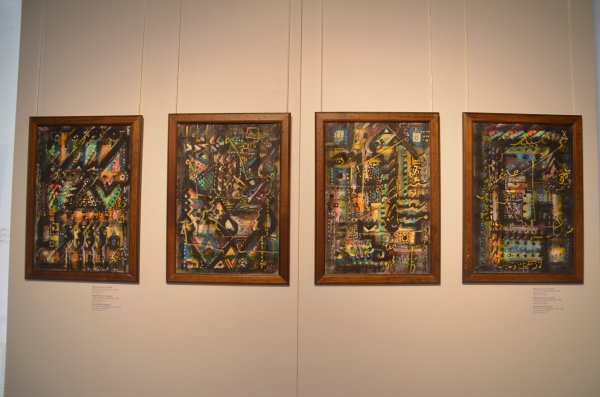
In a varying degree, creativity of each master is tonally connected with Dagestan. It can be the appeal to history, to traditions of the people of Dagestan, to arts and crafts creativity (for example, motives of a stone and wooden thread, embroideries, ceramics), to a landscape, characters, special philosophy which distinguishes residents of Dagestan from other people inhabiting our extensive planet. It is not so important whether the artist in the homeland works or it appeared in other country — in his creativity Dagestan "handwriting" remains, in each dab the love to the home ground, but the special awe arising in the creator's soul appears not just.
In works of masters, there is a balance between an ethnic originality and internal freedom, between the developing centuries, esthetic norms and new requests, which were created under the influence of the world culture of the XX century.
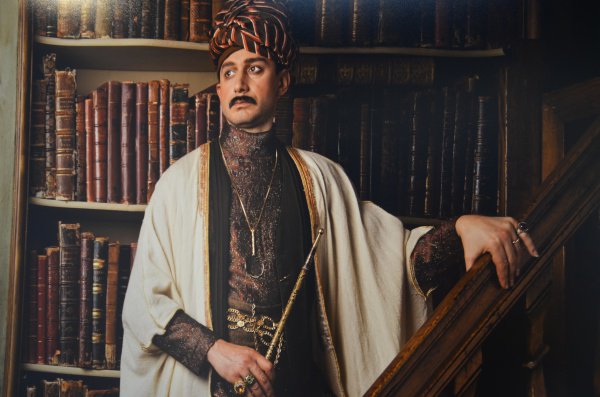
As the head of Fund of Mardzhani Rustam Suleymanov noted during opening of an exhibition, Dagestan left a certain, indelible mark in soul of the Tatarstan people.
- I think, the house of the imam Shamil, in which Tuqay's museum was located, now is known to each local. Earlier this building belonged to the Tatar merchant who married his daughter to the third son of the imam Shamil. They gave birth to the daughter who married then the revolutionary Makhach Dakhadayev in honor of whom Makhachkala was called. It says to us about existence of deep and centuries-old relations between two sister republics. As for directly Dagestan, it is known for the deep spirituality: in the East the whole cities of erudite, future theologians of all-Russian and even world level did not cease to develop. The Dagestan theologians, a sufi had very strong bonds to the Tatar, Bashkir colleagues. There is no secret that among Tatars there were mentors, who trained the Dagestan future stars and vice versa.
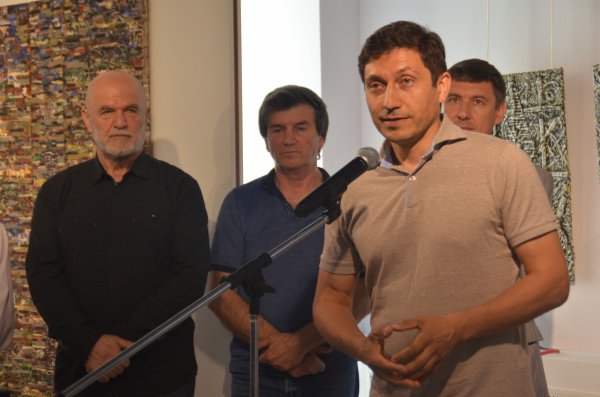
Rustam Suleymanov
One more thin, but strong thread connecting Dagestan and Tatarstan is a figure of Leo Tolstoy. Many of us got acquainted with the Caucasus according to his works – "Prisoner of the Caucasus" and Hadzhimurat touched not one heart. And Tolstoy was a student of the Kazan university of east faculty, and perfectly knew Tatar and other Turkic languages.
- Dagestan is the country of mountains, which are the main dominant, despite existence of the sea and steppe open spaces here. Mountains set the main tone. It strongly affects also the people: the chief mentors on life at Dagestanis are parents, teachers and the environment (those mountains, which are indifferent to small acts and never forgive to weakness). Dagestan is the country of people: here more than 40 indigenous peoples representing the union of absolutely different people in language, in a way of life, in an ornament, in a national suit, but who learned to live together and amicably live. Is and much in common between them.
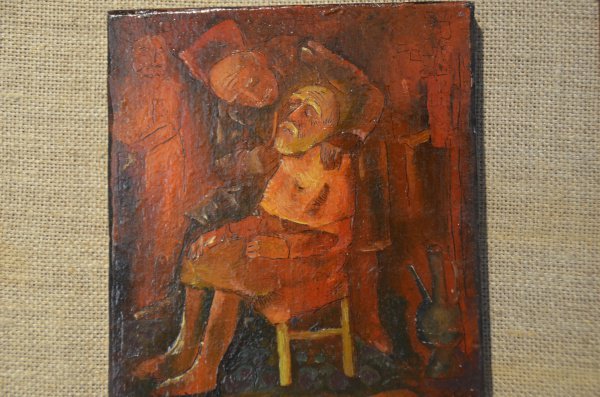
Did you know that in Dagestan in mountain settlements there was a custom until recently: at construction of the new house, the family transferred patrimonial columns which hold on themselves the rooftop from old walls. These columns are decorated with a whimsical carving, solar symbols, ancient signs. Except practical assignment they bear in themselves deep sacral functions to preserve family against misfortunes. Besides, patrimonial columns represent genetic memory and link of times.
- There is a wish to address separately to our artists and to thank for those works, which we are lucky enough to see in Kazan today. Those exhibits, which were selected for an exhibition, express issues, which concern authors of pictures. There are issues of existing, grief that villages became empty, ornaments are constantly forgotten, and natural materials are replaced with something foreign. It appeals to questions of morals, maintaining spirituality and morality, traditions of Islam, tariqa and sufi. Each picture says to us that Dagestan is not only the country of mountains and the Caspian Sea, it is the land of contrasts where each person realizes responsibility to family, to the people, to the mother land.
Artists
Now, as a matter of fact, let's get acquainted with the artists who created for us such beauty.
Eduard Puterbrot (died in 1993 at the age of 53 years) is a philosopher, the art critic, the painter, the schedule, the set designer. Out of a plot, the artist creates the multilayered pictures of the world. In his works, a theatrical beginning also exists. Puterbrot worked as the art director of the Kumyk musical and drama theater, and then Russian drama theater in Makhachkala. Puterbrot united around himself group of artists such as Magomed Kazhlayev, Ibragimkhalil Supyanov, Apandi Magomedov. They keep with each other special internal communication to this day. Each of these masters has own style, but at the same time between artists the spiritual community as if they know only to them the conducted secret language in which an important role is played by attention to symbols and signs, restraint and laconicism of images is felt. The general in them and love to the impressive painting which is often passing into a relief.
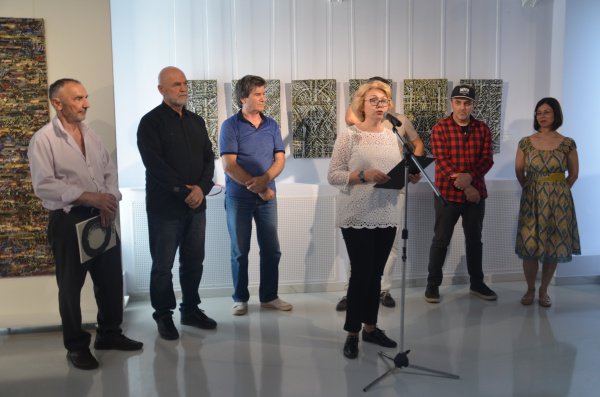
The theater takes an important place in Ibragimkhalil Supyanov's creativity. Ibragimkhalil was born in the settlement of Top Karanay of the Buynaksk district of Dagestan. Since 1975, he has worked as the art director in the Dagestan theaters. In its works, there lives the mountain spirit, the noble culture of the Avarian people.
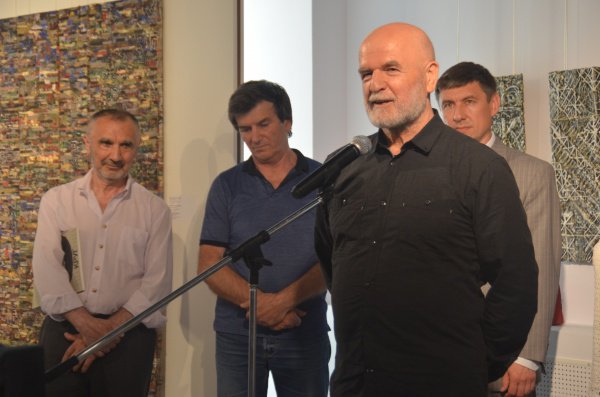
Ibragimkhalil Supyanov
Apandi Magomedov was born in Makhachkala. He works in different spheres of creativity: he paints pictures, paints fabrics, does collages, reliefs, skillfully beating various materials: tree, leather, metal, ropes, wire, threads. Apandi devoted the whole project to Kizyak – widespread material in settlements of Dagestanis. From, apparently, absolutely improper materials he creates impressive compositions of complex structure. Study at textile institute in Moscow and further work with fabrics also found realization in relief compositions of the artist – his works often consist of a set of repeating elements reminding the structure of fabric.
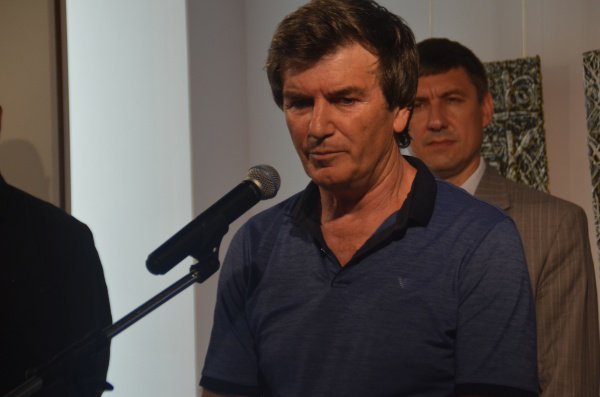
Apandi Magomedov
The native of the Lak settlement of Kazi-Kumukh Mahomed Kazhlayev starting with the 1970th lives in Moscow. Participated in "room" exhibitions of informal art. Mahomed's works are, by his definition, "overcoming space". Ornamental compositions of Kazhlayev are not patterns, they are not thought over and not thought out, especially do not reproduce any traditional decorative motives and schemes.
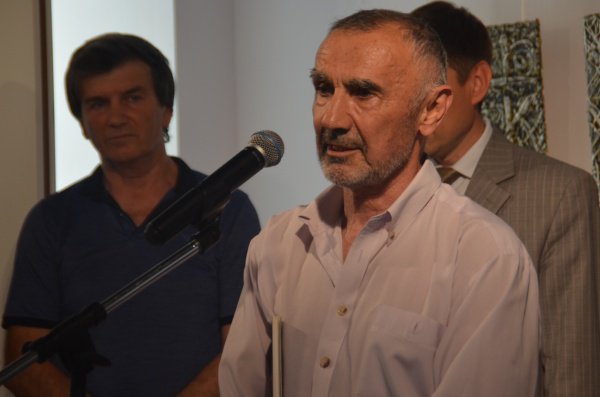
Magomed Kazhlayev
Aladdin Garunov was born in the Dagestan settlement of Ukuz. Graduated from office of art of metal working of the Moscow highest art-industrial school (Stroganovskoye in the past). He lives and works in Moscow. Aladdin uses courageous combinations of materials and invoices in the works. Experimenting, entering dialogue with space, classical he complements a canvas acrylic with rubber, fragments of carpets, reaching unexpected and strong visual effects.
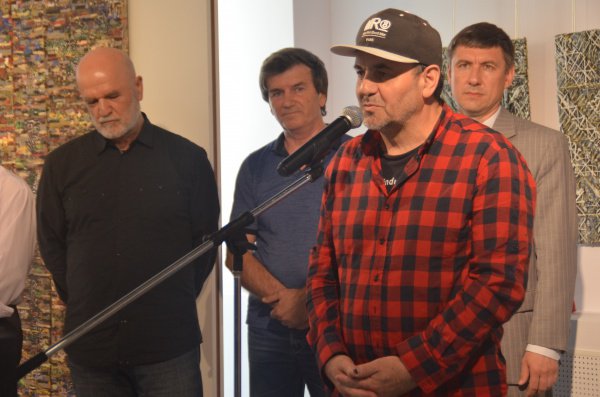
Aladdin Garunov
Taus Makhacheva, was born in Moscow, has the bachelor's degree of Goldsmiths Сollege (London, 2007) and master degree of Royal college of arts (London, 2013), graduated from Institute of Problems of the Modern Art (Moscow, 2009). Taus is a person of the world, the bright representative not only of the Dagestan, but also of world modern art, the winner of a set of international competitions whose works are acquired by the largest museums. Creativity of Taus is based on "the Dagestan material" in all its variety it is a history, culture, modern society.
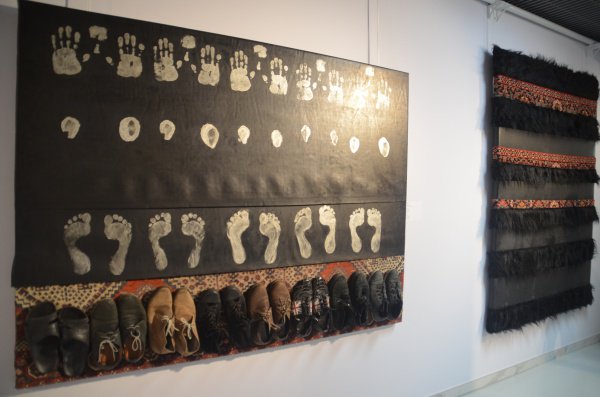
Natalia Mali was born in Makhachkala, lives and works in London. Graduated from faculty of cinema and the modern photo of Yale University, the USA. Being exposed since 2000, Natalia gained popularity in such directions as the production photo, videoart, installation, a collage and a performance.
Murad Khalilov is an artist, the author of videos, short films in style of art house. It is reflections about surrounding reality of the artist, modern realities and echoes of the past. Murad was born in the settlement Kubachi. After the termination of art and graphic faculty of the Dagestan normal school studied in Moscow on the High courses of screenwriters and directors at the Russian State University of Cinematography.
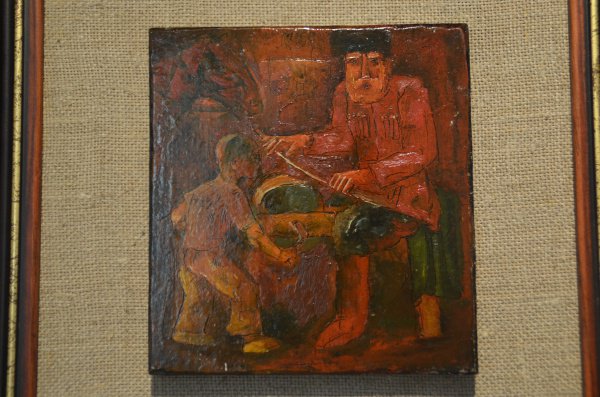
Each of the authors is a chance which he gives the observer of the creativity, chance to plunge into the authentic atmosphere, to be transferred for hundreds of thousands of kilometers and in a flash only with a click of fingers to see the mountains which suddenly grew around you; to inhale fresh sea air; to hear a clothes rustle on the girl who is accurately going down to a stream with a jug in an environment of girlfriends to gather clear water home; to distract on the ring of the dagger hanging on one side the young Dzhigit, hurrying after long absence home; to hear a shrill adhan and to get to a flow of the people following an appeal of the muezzin and hurrying to get to hospitably open doors of the mosque; it is kindness and openness of the local population, so friendly to the guests and are ready to never release the traveler from the house, and to call him the family member …
Ilmira Gafiyatullina
